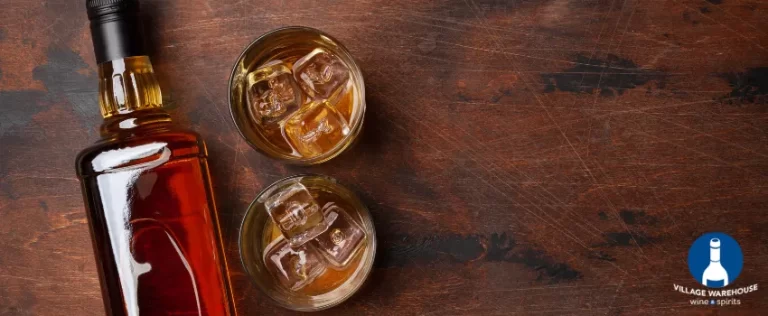Craft beer business owners have experienced many successes and setbacks since the pandemic, but without the support of beer lovers, they would not be able to build their reputations as top beer producers.
This is the best time in American history to enjoy craft beer. The United States has a larger craft beer market than any other country in the world. More than 8,000 breweries in America are responsible for producing the beer brands that the U.S. has.
But, what exactly do brewers mean when they say craft beer? Craft beer is a beer that has been brewed using traditional methods and high-quality ingredients. Craft beer can be more expensive than commercial beer and takes more effort.
Craft beer vs. Commercial Beer
While craft beers are still made, artisanal, commercial breweries work on a larger scale. These giants tend to use the lowest quality ingredients, such as inferior six-row barley and substandard hops, to produce vast amounts of beer at a fraction of the cost of making a real beer. These giants have made it difficult to control quality and provide premium ingredients due to their massive production.
On the other hand, the craft brewing industry is proud of its ingredients. They select high-quality barley and good hops to give each beer the perfect flavor and consistency. This results in a superior beer to mass-produced products produced by corporate giants.
The flavor is what makes craft beer different from commercially brewed beer. Craft beer is a taste of the passion and hard work that made it. A lot of commercial beer tastes flat and stale. Craft beer has various flavors that can be enjoyed like a fine wine. Craft beer brewers spend a lot of time perfecting every keg before it goes out. This ensures a superior quality brew that they are proud of and that everyone can enjoy as much as they did.
Craft Beer Industry Trends
Craft beer has been a rising star in beer drinking over the past decade. The majority of Americans now live within 10 miles of the craft brewing industries. This is a drastic change from what was possible just a few short years ago. Here are some emerging beer industry trends that have been solidified due to a large number of craft breweries:
Competition With Macro-Breweries
The market share for craft beer in the U.S. was almost 12%. However, it has been stagnant and has only seen single-digit growth over the past few years.
Analysts believe the niche will grow in market share soon. This assumption assumes that craft beer’s popularity comes from younger customers. People older than us who used to drink more micro-brewed beer tend to purchase less beer in bulk.
Craft beer is not something young people consider special. Young adults are eager to find their path.
More Demand For Craft Lagers Than IPA
Lagers were not considered “real” craft beer for so long that they had a poor reputation. However, they were still prevalent among micro-brewery beer enthusiasts. IPAs are still the most popular craft beer, but their market share is slowly shrinking as craft brewers seek to offer a semi-familiar flavor. Double dry-hopped IPAs may not be for everyone.
Micro-brewers can create lagers that are well-received and popular. Lagers are gaining popularity and admiration and are becoming the poster child of new craft beer trends.
Sour Beers Gain Mass Support
These sour brews have been a niche product for a while and are steadily losing popularity. These unique, tart, and fruit-influenced beers have seen an increase in mainstream sales.
Brewers claim that sour beers outperform other beers in terms of growth, but only in percentage and not total volume.
Sours are becoming more popular because they come in a variety of flavors.
They come in various flavors, from light and smooth to fruity and strong. They are enjoyed by both beer experts and novices alike.
Rise of Mixed Beers
As marijuana legalization has begun, it makes perfect sense for CBD beer to be made.
CBD is an inert and non-psychotropic component to cannabis. Cannabidiol gives the brew a little extra kick.
Rose beers are on the rise, too. This beer was inspired by sweet rose wines and is poised to be a major player on the craft brewery scene. It is expected to be mainstream.
Challenges Facing the Craft Brewing Industry
The brewing industry faces some serious headwinds. The year 2020 saw a 9% industry decline. This is the first such production drop in modern craft history, and the pandemic drove it. The days of double-digit sales growth and seemingly unrelenting introductions and upgrades of breweries and brands are long gone.
The brewing industry must confront daily issues like the cloud of possible shutdowns, supply-chain headaches, and other concerns.
Here are the beer trends and challenges that the craft beer industry may face, according to experts:
Climate Change Affecting Hops Production
Many craft beer business owners are concerned about maintaining clean water supplies. The craft beer industry is dependent on the environment in its region. Water containing certain mineral combinations is required for many fine craft beers. According to some reports, each gallon of craft beer produces seven gallons of water during its production.
Craft beer’s distinctive flavor is primarily due to its water quality. This aspect of the manufacturing process is why small breweries can specialize in regional beers. Local craft brewing businesses could be severely affected by environmental disasters that affect local drinking water quality.
Importance of New Product Development
Craft brewers can appeal to a broader market than large beer producers who try to sell their products to national consumers. Although customers might prefer Budweiser, Miller, and Coors brands, craft brewery customers tend to try products from other breweries. These small businesses must bring new products to their local markets to stay in touch with craft beer trends.
Managing Point of Sale Problems
There is a lot of competition in the $26 billion craft beer market. This is why small brewers are increasingly looking for retail outlets to sell their beer.
Craft beer brewers may also need to invest more in packaging and sales displays to promote their products to a broader audience.
High Demands in a Highly Competitive Market
The greatest challenge facing the world today is the growth of the craft beer industry.
A consequence of this was an increase in competition for employees. In 1980, there were 4,595 beer distributor companies. By 2015, that number had dropped to 3,000. Brewers today face fierce competition, making it difficult to differentiate their brands.
Village Warehouse Wine and Spirits Lets You Experience the Artisan Taste of Craft Beers
This Liquor Store in Vail, Colorado has the right beer for you. Village Warehouse Wine & Spirits is proud of its carefully curated selection of wines and beverages.
Quality wines, beers, and spirits at an affordable price. We invite you to visit us and show your appreciation by giving you a bottle that you will love.





